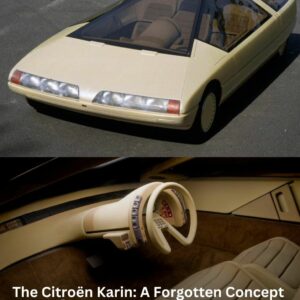The Mercedes-Benz 300 SL Gullwing is more than just a car—it’s a symbol of technological marvel and revolutionary design. When it debuted at the 1954 New York International Motor Sports Show, the 300 SL stunned spectators, not only for its powerful performance but also for its audacious design features. Among these, the most iconic was its unique “Gullwing” doors, which opened upward like the hatches of a spaceship, making the car appear futuristic and otherworldly. This stunning sports car didn’t just stand out at auto shows; it changed the automotive landscape forever.
A Revolutionary Design and the Birth of the “Gullwing”
The unusual “Gullwing” doors were not merely an aesthetic choice; they were a necessity driven by the car’s racing heritage. The 300 SL was designed with a racing-inspired space-frame chassis that had high side sills, leaving no room for traditional doors. To overcome this challenge, Mercedes engineers ingeniously hinged the doors at the roof, creating a design feature that would go down in automotive history.
This engineering solution not only made the 300 SL stand out visually but also enhanced its aerodynamic efficiency. The car’s performance was just as remarkable as its appearance, with the design ensuring that the 300 SL could perform on the racetrack while still being practical enough for everyday driving. The car quickly earned the affectionate nickname “Gullwing” and became one of the most desirable vehicles of its time.

Video
Watch the 1955 Mercedes-Benz 300SL Gullwing Coupe in the ultimate edition on Jay Leno’s Garage!
Inspired by Jaguar: The Genesis of the 300 SL
The roots of the 300 SL’s development can be traced back to Mercedes-Benz’s desire to compete in the burgeoning world of sports car racing. Drawing inspiration from Jaguar’s victory at the 1951 Le Mans with their C-Type, Mercedes sought to build a car that could compete in racing events and also capture the attention of affluent buyers.
The responsibility for developing this new sports car fell to Mercedes’ head of passenger car engineering, Rudolph Uhlenhaut. Using parts from the newly introduced 300 luxury sedan, Uhlenhaut’s team created a racing car in just nine months, designated W194. Despite being heavier than originally planned—about 1,900 pounds—the car was designed with an aerodynamic body, and a six-cylinder engine mounted at a 50-degree angle to ensure optimal performance.

The Ingenious “Gullwing” Doors
The 300 SL’s technical innovations didn’t stop with its design. Its 3.0-liter inline-six engine, combined with a four-speed transmission and an independent suspension system, made the car one of the most advanced vehicles of its time. However, it was the door design that would capture the public’s imagination and cement the 300 SL’s place in automotive legend.
The high sill area of the space-frame chassis necessitated the roof-hinged doors, and this design would go on to define the 300 SL’s identity. The car’s architecture was both a technical achievement and a masterstroke in form and function.

Winning from Day One: Triumphs in Racing
The 300 SL made its mark on the racing world almost immediately. At the 1952 24 Hours of Le Mans, the 300 SL achieved a remarkable one-two victory, solidifying its reputation as a race car. It followed this up with another win at the notoriously challenging Carrera Panamericana in Mexico, further proving its durability and performance.
Despite its success in racing, Mercedes initially hesitated to put the 300 SL into production. It was only after the persuasion of Max Hoffman, the U.S. importer for Mercedes-Benz, that the company decided to build a production version of the car. Hoffman, seeing the potential of the 300 SL as a high-end sports car that could appeal to wealthy American buyers, placed an order for 1,000 cars, paving the way for the Gullwing to become a commercial success.
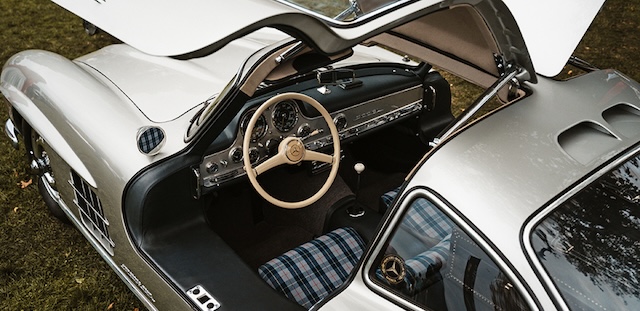
The Technological Wonder of the 1950s
The 300 SL was a true technological marvel. The body was primarily made of steel, but the hood, trunk panels, rocker panels, and door skins were constructed from aluminum, helping reduce weight without sacrificing strength. While the production version of the 300 SL was slightly heavier than its racing predecessor, it still embodied the cutting-edge technology and engineering that had made the original W194 race car so successful.
One of the most revolutionary features of the production 300 SL was its mechanical fuel injection system, a first for any automobile. This advanced induction system boosted the engine’s output to 220 horsepower, a significant increase over the 171 horsepower of the original race car. With an optional sport cam, output could be further increased to 240 horsepower, making the 300 SL one of the fastest and most powerful cars of its era.
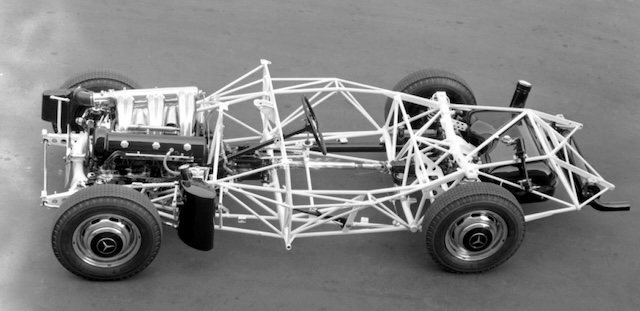
The Gullwing’s Exterior and Interior Appeal
The 300 SL Gullwing was not only a performance powerhouse but also a thing of beauty. Its sleek, aerodynamic design was complemented by exquisite details, such as the iconic egg crate-style front grille and the elegantly sculpted fenders. Inside, the car offered a level of comfort and luxury that was rare in high-performance vehicles. Though air conditioning was not available, the interior featured plush leather seats and finely crafted controls, making it suitable for both everyday driving and long-distance touring.
Despite its high-performance capabilities, the 300 SL was designed to be practical enough for daily use. The trunk, though compact due to the spare wheel, was specially designed to accommodate custom luggage for the discerning owner.
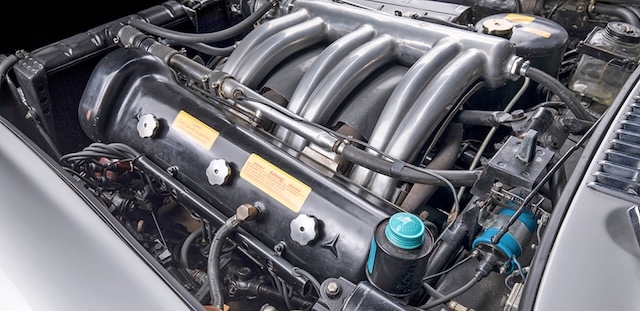
A Racing Legacy: Built to Be Driven
The 300 SL wasn’t just a showpiece—it was built to be driven. In the hands of skilled drivers, the Gullwing truly came alive. American racing legend John Fitch demonstrated the car’s racing pedigree when he won the GT class at the 1955 Mille Miglia in Italy, driving a stock 300 SL. The car’s handling, combined with its speed and reliability, made it a true contender on both the racetrack and the open road.
In many ways, the 300 SL was the world’s first supercar. With its combination of cutting-edge technology, stunning design, and incredible performance, it set the stage for the high-performance cars that followed. In 1955, Road & Track magazine captured the spirit of the 300 SL perfectly: “The sports car of the future has become a reality.”
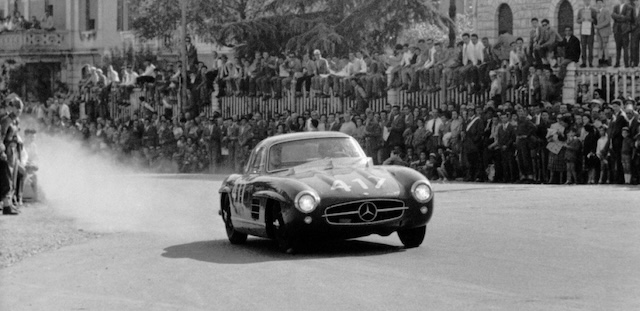
Video
Check out another video of Nico Rosberg driving his 1955 Mercedes 300SL through Monaco!
70 Years of History: A Legacy That Lives On
The 300 SL continues to captivate car enthusiasts and collectors around the world. In recent years, the car has been celebrated in various events, including the Pebble Beach Concours d’Elegance, where numerous 300 SLs, including original W194 race cars, have been displayed. A 70th-anniversary exhibition at the Mercedes-Benz Museum in Stuttgart further highlights the significance of the Gullwing in the history of automotive design.

The 300 SL Gullwing remains a symbol of innovation, performance, and beauty. It is a car that has not only influenced the design of sports cars but has also earned its place as one of the most iconic vehicles in automotive history.

